

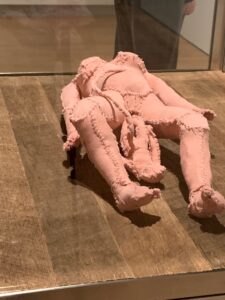
Louise Bourgeois affects us viscerally. The extraordinary physicality of her work outstrips any other art addressing the female body and its excruciating alterations from pregnancy, childbirth, parenting, sexuality, abuse, aging.
I once met her in Houston at a conference of women artists who were marching for the ERA in 1975. She was wearing a many breasted Artemis dress.
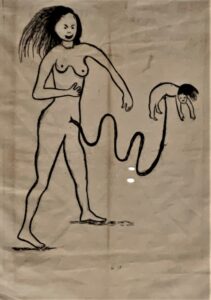
But the works in “Louise Bourgeois: The Woven Child.” at the Hayward Gallery, begun so many years later are not at all entertaining. They are not easy. This print is called Umbilical Cord dated 2000.
I felt drained after viewing this exhibition It looks at her works using textiles that she began only in the mid 1990s when she was already in her eighties. We were thinking Oh textiles, pretty benign. But of course it was the opposite.
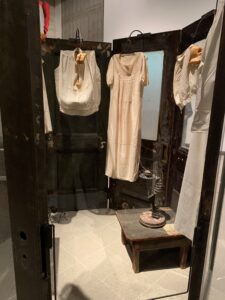
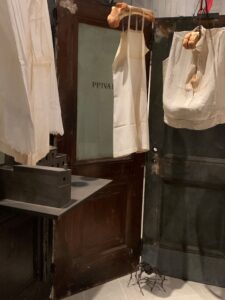
The first piece we saw as we entered the gallery suggests the process of the artist in creating these works. Apparently in the mid 90s she asked her assistant to bring all her old clothes down to her studio.
Of course her old clothes are a lot more interesting than our old clothes. Old fashioned undergarments hang on hangers or odd large bones in a “cell”, as Bourgeois tellingly calls this type of installation marked private.
At the center of the cell is a small spiral staircase with a bed and a body from which threads emerge. If you look hard you will see a spider also.
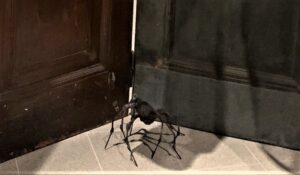
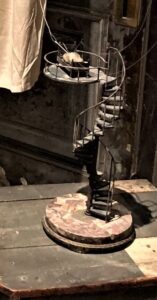
As we went further into the exhibition we saw more old fashioned underwear now hanging on bones in the gallery, not in a cell. It was somehow more frightening that way.
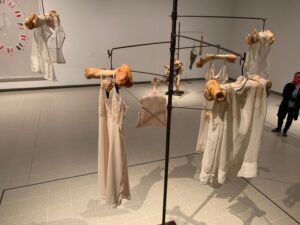
In the next segment was another famous and terrifying work: the famous spider installation from 1997. A huge spider, called Maman, nine meters high, was featured in the Turbine Hall at the Tate Modern when it opened in 1999, and again was displayed outside in 2007 during a major retrospective of the artists work. According to the artist ‘The Spider is an ode to my mother. She was my best friend. Like a spider, my mother was a weaver … (she) was very clever. Spiders are friendly presences that eat mosquitoes. We know that mosquitoes spread diseases and are therefore unwanted. So, spiders are helpful and protective, just like my mother.”
In addition spiders spin threads, and repair their webs when we destroy them. But they can also swallow insects easily.
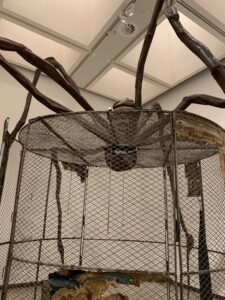
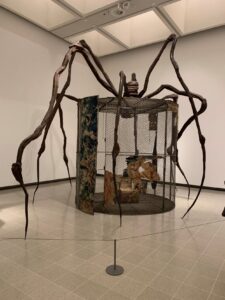
In this version of Spider there are fragments of tapestry inside as well as other details of sewing. As we all know, Bourgeois worked for her family restoring tapestries as a child. She worked on details such as hands or feet. Here we see the spider that spins thread turns into a giant predator.
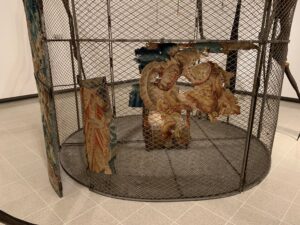
From the catalog essay “Weaving Materials and Metaphors,” by Lynn Cooke
“While the spider and unspooling thread were freighted with
personal signification for Bourgeois, both are replete with classical
allusions as she doubtless knew. In Metamorphoses, Ovid
provides an aetiology for the former in the tale of Arachne who
foolishly contested Athena’s pre-eminence in the art of weaving.
Enraged that she had been bested, the goddess transformed the
upstart maiden into a spider bound forever to spin and weave.
Thread lies also at the heart of a haunting myth featuring the
Three Fates who control the destinies of mortals. In Hesiod’s
version, Clotho, the spinner, Lachesis, the allotter, and Atropos,
‘the inflexible one’, who terminates each human life with an irreparable snip of her scissors, all take the form of old women.”
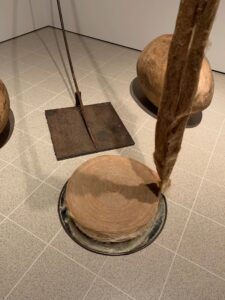
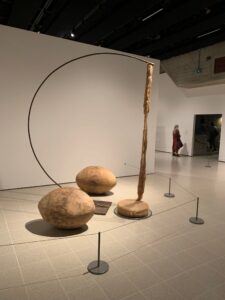
Another installation Needle 1992 The gigantic weaving needle arcs from hanging yarn that spools on the floor. It has had an unavoidable sexual reference of invasion, but who is invading what. The oval shapes maybe ovaries? The sheer audacity of the piece is thrilling.
The exhibition included several series based on smaller embroidered works. As always, you think oh, small scale, but then pow.
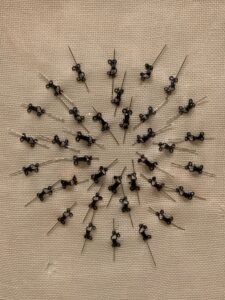
Many of the works were figurative. Here is the incredible image of childbirth at the top of the post : Do Not Abandon Me 1992

These images really speak for themselves. They are all untitled.
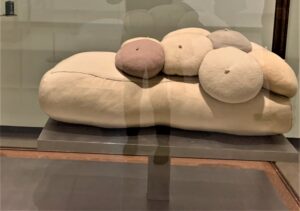 1996
1996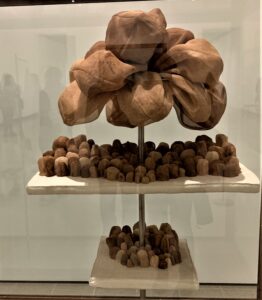
2007
2005
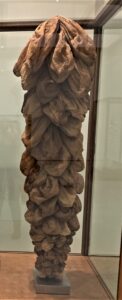
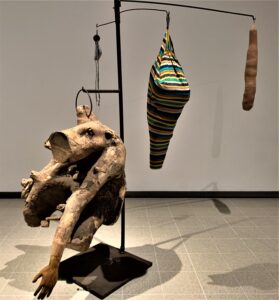 1996
1996
1996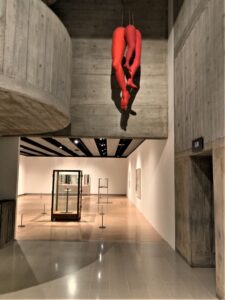
There were many other works in the exhibition, such as this one called Endless Pursuit from 2000.
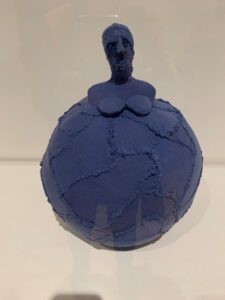
Or this one Cell xxi 2000 and you see other cells aligned with it behind it.
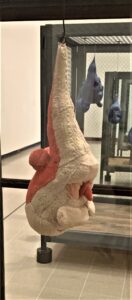
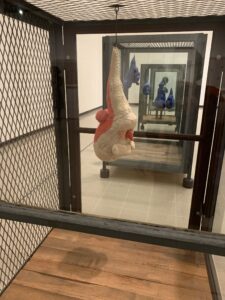
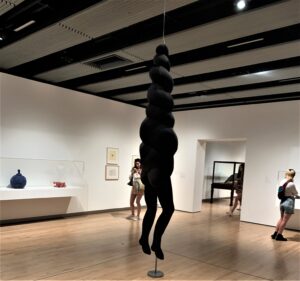
The famous spiral woman 2003 but it exists in many variations of course. She looks like she is experiencing multiple pregnancies
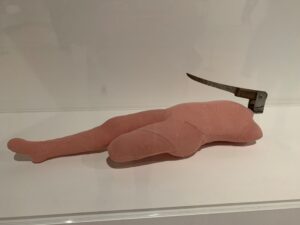
Particularly painful Knife Figure 2002
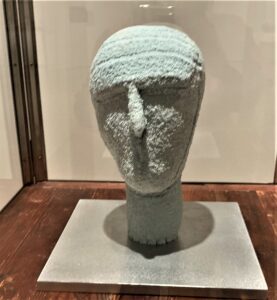
The Mute 2002
And much much more. Incredible bodies intertwined missing some parts such as heads. Anonymous copulating that feels as though the two bodies are one single organism. For some reason I didn’t take pictures of those. Perhaps because they were all black and too dark in both their color and their mood.
A great deal has been written about Louise Bourgeois and she wrote a great deal herself. But in the end I am speechless at the sheer physicality of her work. So the woven head of the mute seems to be an appropriate ending.